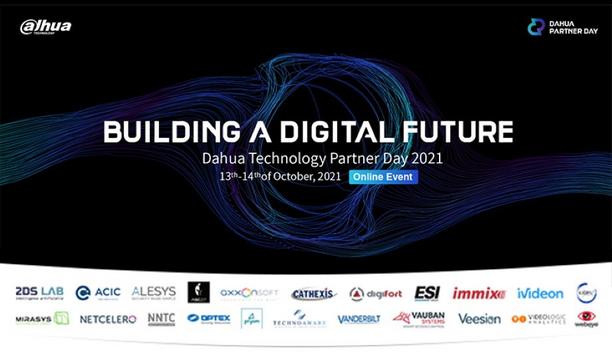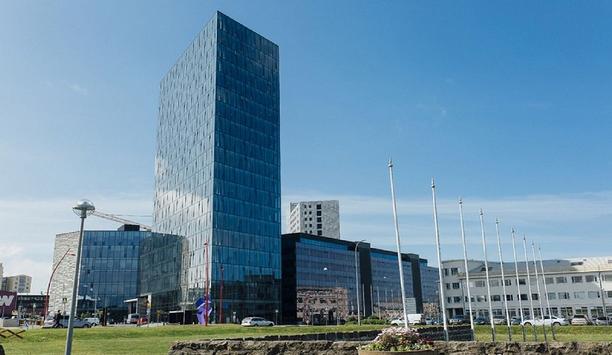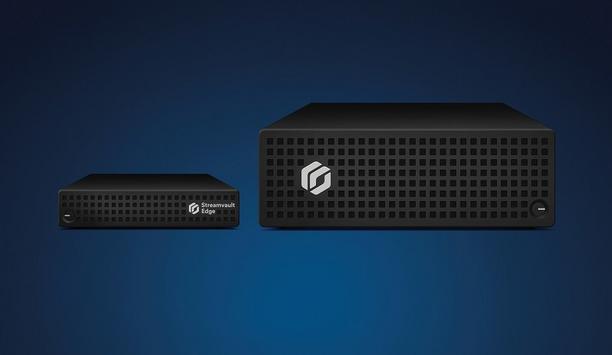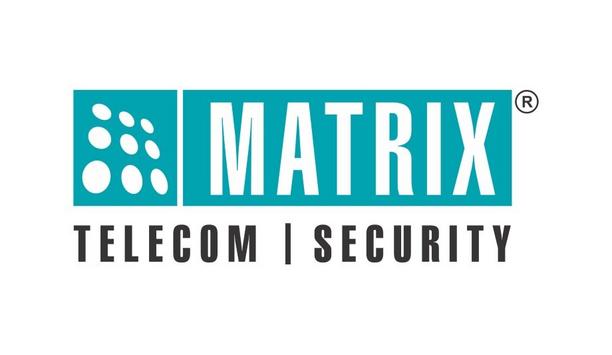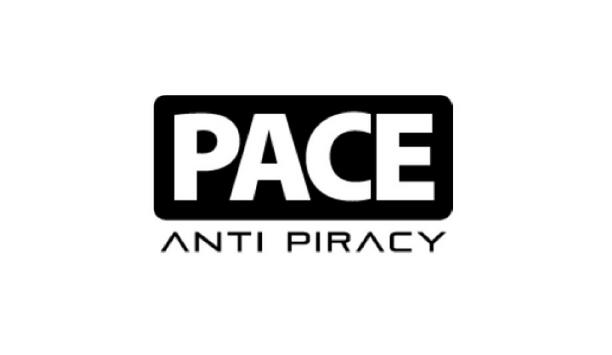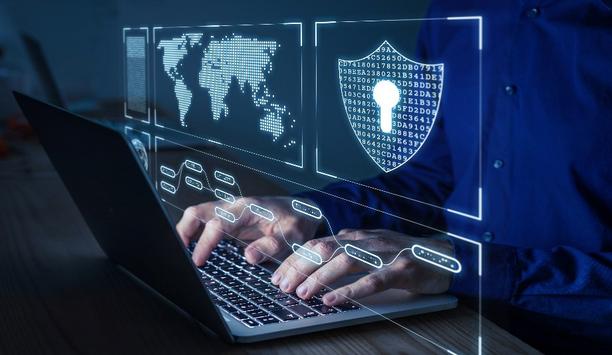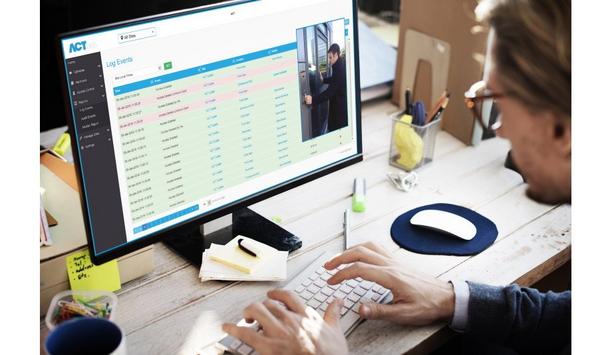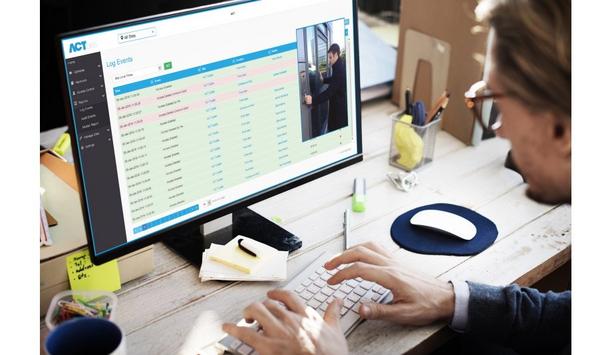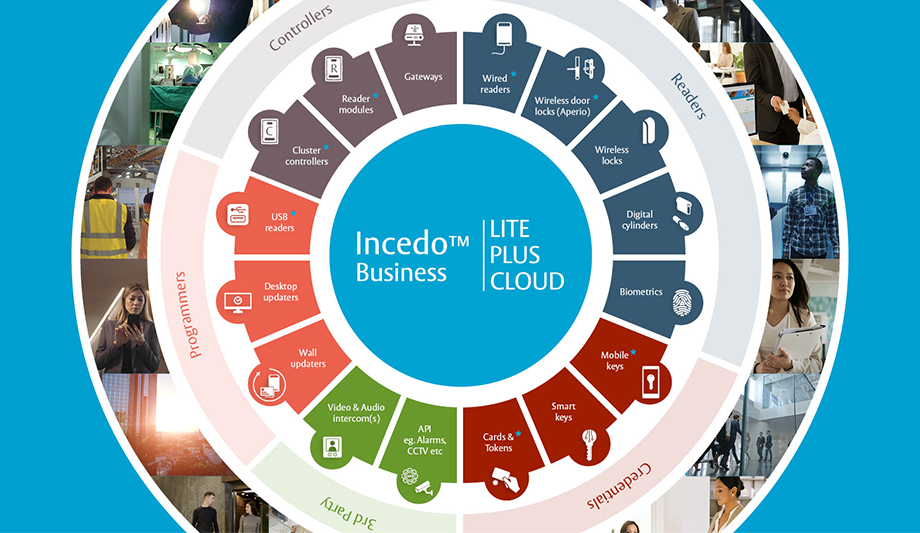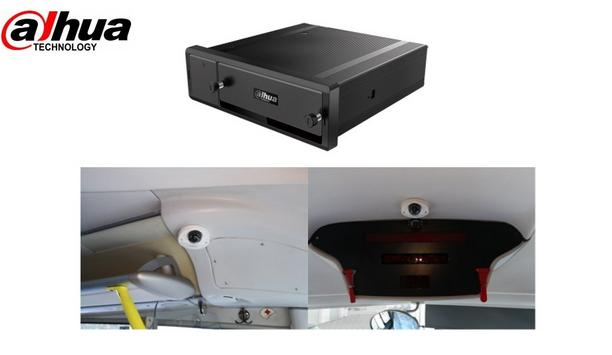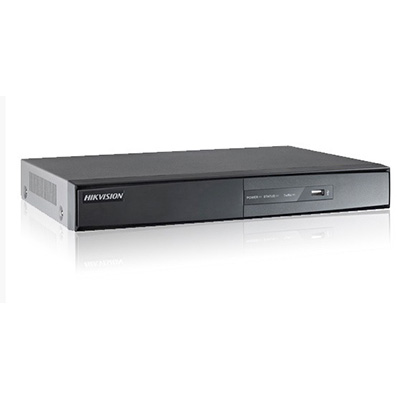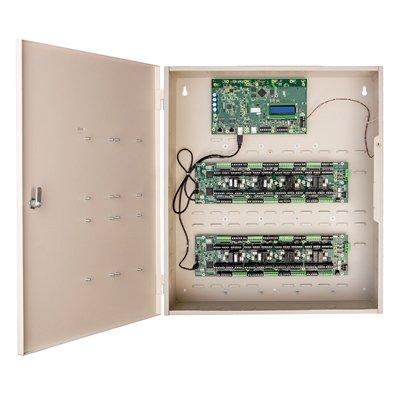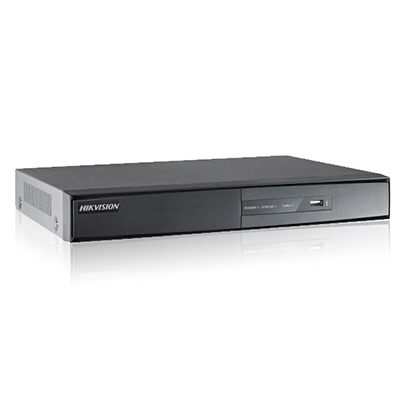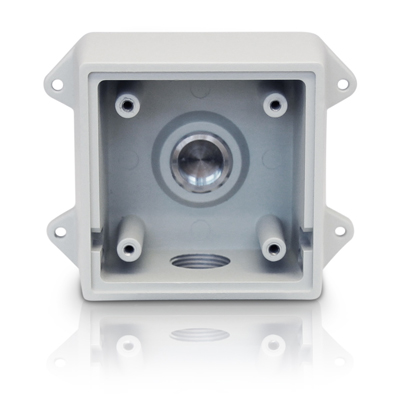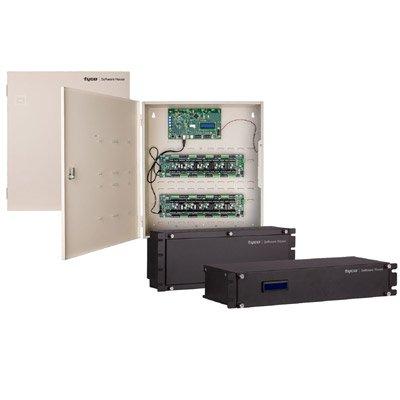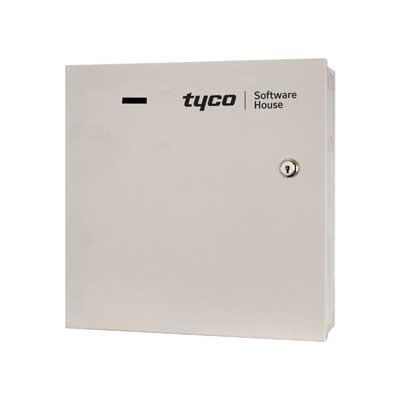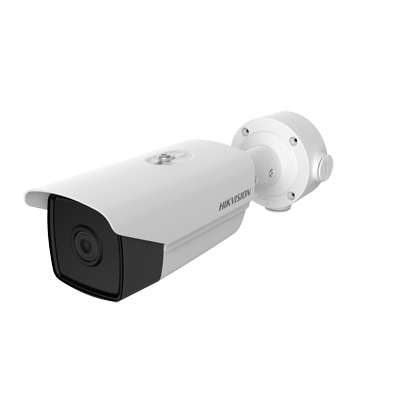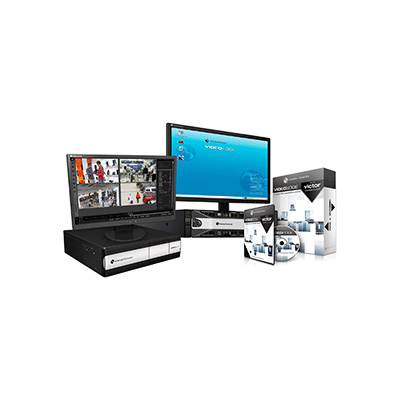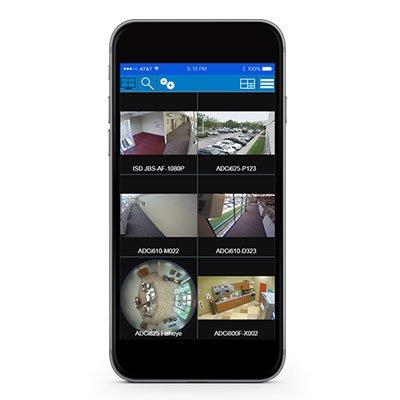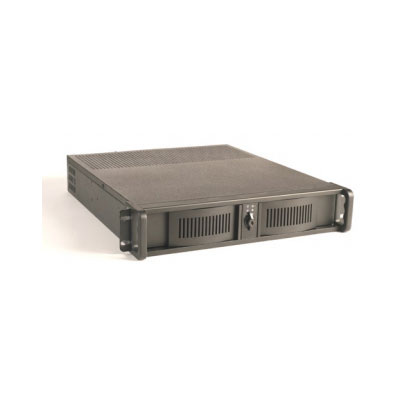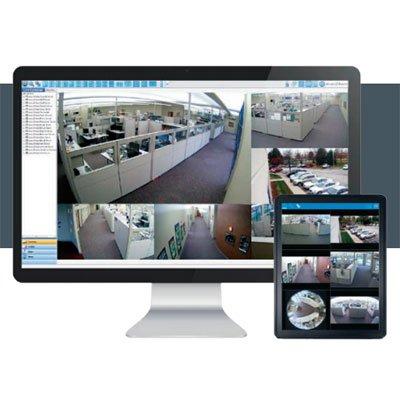Banking & Finance security applications
Since Copenhagen-based Danske Bank began using March Networks® video surveillance systems in 2007, the risks facing the banking industry have changed dramatically. In 2012, according to Thomas Johansen, director of the bank’s Physical Security and Risk Group, Danske Bank had 36 robberies in Denmark alone. In 2018, as consumers performed more of their banking online and the number of branches decreased, there were only three bank robberies recorded. Video surveillance system However,...
Wilson Bank & Trust, member FDIC, is an independent, community-based bank that began operating in Tennessee, USA in 1987. They have mortgage offices, operations centers, ATMs and branches located in and around Middle Tennessee that serve the city and surrounding rural areas. In total, they have operations and security at approximately 40 locations. One of the keys to their on-going success is their continuous search to improve their offerings. This drive extends to their physical security a...
Dahua Technology, a globally renowned video-centric smart IoT solutions and service provider, will hold its 2nd online Dahua Technology Partner Day, from October 13 - 14, 2021, with the theme - ‘Building a digital future’. Dahua Technology Partner Day Adhering to its strategy of open cooperation, Dahua Technology is committed to creating a win-win ecosystem, with major technology partners around the world. This year, Dahua Technology will join hands with its 22 global partners, in...
Reiknistofa Bankanna (RB) is a provider of mission-critical IT systems for Icelandic financial institutions, responsible for the country’s central clearance and settlement system and several multi-tenant core banking solutions. It also operates an e-invoicing and e-payment system for corporates and consumers. It is jointly owned by the three main Icelandic banks, two saving banks, the Icelandic Savings Bank Association, and the three main payment card processors in Iceland. RB’s cli...
Schools present unique challenges for security and access control. But what about a school that is also a heritage site of exceptional value? The Colegio Diocesano Santo Domingo in Orihuela, Spain, is more than just a school. Its historic buildings date to the 1500s, a heritage site as well as a place of learning — with a museum that requires the protection of the same access system. The college buildings are a Resource of Cultural Interest and on Spain’s heritage registry: They mus...
The 100 Mount Street premium-grade office tower completed in May 2019, is the tallest (152m) building in North Sydney. With an innovative cross-braced exoskeleton structure and a soaring glass curtain wall, the tower celebrates Sydney‘s history of excellence in architecture and structural engineering. The 35-story office tower offers panoramic views of Sydney Harbor, Sydney Opera House, and Sydney Harbor Bridge, and is occupied by some of Sydney’s best-known companies. The site al...
News
More than one million electric vehicles are registered in the U.S.—and they all have to plug in somewhere. As EV charging stations pop up across the country, one of the chief questions will be how charging station users are identified, authenticated, and connected with membership or payment systems. Radio-frequency identification cards and tokens and smartphone authentication apps have emerged as two viable options for EV charging authentication. Which is best? It may depend on the user base they plan to serve. User authentication for EV charging Most electric vehicle owners have a spot to plug in while at home, either in their own garage or carport or in a designated charging spot in a tenant parking garage. But electric vehicles also need spots to charge while owners are out and about. The EV charging market is broadly divided into two tiers: Level 2 charging stations, which operate at 208-240 V and use AC power. These stations will add 20-25 miles of range in about an hour of charging. The U.S. Department of Transportation listed more than 22,800 public Level 2 EV charging stations across the nation as of mid-2020. They are commonly found in public parking lots and garages, hotels, grocery stores, malls, and other commercial areas. They may also be installed in private parking garages and business parking lots for use by tenants, employees or fleet drivers. Collecting membership data Direct Current Fast Chargers (DCFS) are designed to charge an EV battery to about 80% in 20-30 minutes. There are currently about 15,000 DCFC stations across the U.S., but their numbers are expected to explode as more people start taking EVs on longer road trips. They are commonly found along major interstate highways. As the market evolves, user authentication requirements for EV charging stations are likely to vary by type, location, and user base. Some commercial locations may provide Level 2 EV charging as a free amenity to shoppers, guests or employees. If there is no charge for the service, there may be no need to authenticate users at all— people can simply park and plug at any available spot. However, there may be a benefit to collecting membership data (e.g., shopper reward club). Private charging stations Public, for-profit EV charging stations, like gas stations, need a method to collect payment for their services. In some cases (especially at roadside DCFS stations), users may simply pay for the minutes used with a credit card—just like at the gas station pump. However, many EV charging station users are already accustomed to identifying themselves with an RFID membership card or a smartphone app. Charging networks like ChargePoint and Blink enable members to access any EV charging station within their networks with a card or smartphone app, which connects to their membership, account, and payment information. Private charging stations—such as those offered to tenants, employees or fleet drivers—may not require payment but need to ensure that only authorized drivers are accessing power and taking up valuable parking spots. An RFID card or smartphone app can be used to identify authorized drivers and track charging behaviors. Moving forward, many EV charging stations may find that they need a mix of options for users, including membership cards, smartphone apps, and a credit card payment option for out-of-network drivers. Choosing between RFID and smartphone apps In the long run, the answer may be ‘both.’ RFID cards are economical and easy to issue When user identification and authentication are desirable, which is the better option: RFID cards or smartphone authentication? Both have their uses in the EV charging market. In the long run, the answer may be ‘both.’ RFID cards are economical and easy to issue. And for some users bases, they may not have to issue a new card at all—they can take advantage of an RFID card they already carry. In many cases, it is possible to leverage existing employee IDs and membership cards for access to privately controlled EV charging stations. RFID membership cards may be a good bet for: Fleet drivers who already carry an RFID card for vehicle access. Employee parking lots and garages where people already use a card for entry. EV charging parking spots at gyms or other locations where users want to limit charging access to active members. EV charging stations Most consumers would prefer not to have to carry a physical membership card for every retail outlet On the other hand, public charging stations may find that consumers would prefer to use a smartphone app rather than receive another membership card to carry in a physical wallet. Many consumers prefer to carry only their phone and one or two essential cards (such as a driver’s license and a single credit or debit card). As more retailers enable consumers to pay via a digital wallet app on their smartphones, some don’t even carry a physical credit card anymore. Most consumers would prefer not to have to carry a physical membership card for every retail outlet they visit—and that includes EV charging stations. Smartphone apps for user authentication are simple to set up and highly secure. Instead of RFID, they typically use either Bluetooth® Low Energy (BLE) or Near-field Communication (NFC) protocols. Public charging stations For the user, the experience is almost identical to RFID authentication, except they wave a smartphone over the reader instead of a card. Apps have other user benefits, too. A custom app for EV charging can be configured to help users locate or reserve charging stations, check their balance and usage history, and change their payment options right on their phone. These features make smartphone authentication ideal for consumers These features make smartphone authentication ideal for consumers accessing a network of public charging stations. However, EV charging network managers should keep in mind that some users may still want a physical membership card. Smartphone-Based authentication There are still some user populations, such as older consumers and those from lower income brackets, where smartphone ownership is not ubiquitous. If users are primarily using EV charging for a fleet vehicle, they may not want to download an application for work on their personal cell phone. Other users may find smartphone apps confusing or simply prefer to have a card for other reasons. The answer for both public EV charging networks and private charging station owners is to have an RFID reader that is capable of both card-based and smartphone-based authentication. This will provide maximum flexibility as user preferences change. Finding the right RFID reader for EV charging The ELATEC TWN4 MultiTech family of readers is ideal for authentication at EV charging stations The best RFID reader for EV charging is one that is flexible enough to meet the needs of all user populations and evolve as requirements change. The ELATEC TWN4 MultiTech family of readers is ideal for authentication at EV charging stations. The readers support 60+ RFID transponder technologies along with BLE and NFC smartphone authentication. This means that one reader can support all common technologies already in use across the entire user base—both nationally and internationally. This capability becomes important for applications where users want to enable drivers to use an existing RFID card (such as their employee or fleet ID card or an access card for a tenant parking garage) for access to charging locations. It also provides more flexibility as technologies or preferences change in the future. Supporting advanced encryption TWN4 MultiTech supports advanced encryption and security configurations for highly secure transactions between the card or smartphone and the reader. This is important for EV charging applications tied to payment or employee/driver identification. ELATEC readers are mobile-ready. The ELATEC Mobile Badge BLE NFC App offers simple and effective components for building or extending a mobile application for EV charging networks. Non-managed mobile credentialing using the ELATEC app is free. TWN4 MultiTech readers also work with multiple existing third-party managed credential systems, such as KleverKey, Safetrust, and Transact. The TWN4 MultiTech is easy to customize with the powerful Software Development Kit (DevPack) and App Blaster and Director utilities. Readers can be easily configured to support custom functionality (such as LED light flashing sequences or sounds for user feedback) and integration with backend software for easier member management. The DevPack tools make the TWN4 family the most powerful, versatile, and sustainable readers on the market. Hardware communication interfaces As electric vehicles move from niche to mainstream, EV charging infrastructure will need to grow and evolve to accommodate millions more drivers—both in the consumer market and in commercial fleets. With TWN4 MultiTech, EV charging station managers will be ready. Interested in learning more about technical considerations for RFID? Download 11 Considerations for Embedded System RFID Readers for additional advice, including operating power and consumption requirements, antenna placement, hardware communication interfaces, and more.
Credit unions and banks have long used cutting-edge technology as part of their physical security efforts. However, with crimes becoming more and more sophisticated, the technologies used to defend against them in the banking industry must follow suit. The question is, how exactly can current financial institutions ramp up their bank security to rise to the challenge of combating the advanced strategies of bad actors? The answer can be summed up in one word: biometrics. Biometrics Biometrics is the automated identification of people. With physical security systems that use biometrics, financial institutions can enjoy a higher level of security, one that safeguards the back offices’ and branches’ equipment, data, and other vital assets. Here’s a rundown on everything users need to know about how to update bank security by leveraging biometrics. Biometrics for bank security One-to-few matching ensures the user's face and its properties are in the database before authentication Biometric physical access control works by assessing individuals’ physical characteristics to trigger their entry to secured areas. Biometric systems utilize identifiers like facial authentication to scan credentials before granting or denying admittance. This next-gen technology is relatively new, but facial authentication compared to using fingerprints, palm veins, or iris scanning, for example, is the most precise biometric when it comes to development, advancement, and ease-of-use. One-to-few matching ensures the user's face and its properties are in the database before authentication. Facial authentication effectiveness for bank security Each person’s face is inherently unique no two faces are the same and that’s why biometrics like facial authentication is so effective. This type of technology makes it more difficult for unauthorized individuals to manipulate your bank’s security system to gain access to users' most essential assets. Standard door locks provide an insufficient level of security, like identification cards, and key fobs, and keys can easily be tampered with or stolen, therefore making the lock ineffective. Biometric physical security systems provide a much more convenient and highly effective workaround for current financial institutions. Where to use biometrics in bank Biometrics can even be used for keeping the bank employees’ attendance and time A top-tier biometric system that uses artificial intelligence has several uses for banks. For instance, users can increase bank security by using a biometric system to grant or deny employees access to the building as well as to the vault. Likewise, users can use this system to control gate access during the daytime, provide visitor authentication, or determine who can access the institution’s safety deposit boxes. Likewise, biometrics can be used for controlling access to the institution’s data centres. Biometrics can even be used for keeping the bank employees’ attendance and time. What to look for in a bank security system A facial authentication solution like the Alcatraz Rock is ideal for protecting the financial institution’s spaces with identity authentication powered by artificial intelligence. Users can use this solution to secure all areas of your facility. This particular product works by detecting the security breach of tailgating, where unauthorized individuals follow authorized parties to enter areas that are typically closed off. The Rock The solution additionally offers the benefit of being touchless, therefore reducing health risks The Rock also secures every restricted area to keep both your bank’s cash and data from being stolen. This technology comes with reliable and fast employee verification that mitigates risk while also enabling the uninterrupted flow of access. The solution additionally offers the benefit of being touchless, therefore reducing health risks by decreasing touchpoints. Implementing a new physical security technology Over the years, big banks and other enterprises have invested several million dollars in their physical access control systems, and they deploy these solutions vastly among their expansive real estate portfolios. Most of these companies use the conventional proximity card reader, and some utilize mobile technologies along with traditional biometrics. Fortunately, their investments don’t have to automatically go to waste just because they decide to transition to a biometric system, like the Rock. Real-time alerts Alcatraz AI’s Rock has a one-of-a-kind architecture that enables customers to leave what has already been installed on their premises. Instead of removing their old technology, they can simply add Alcatraz AI’s technology to their existing hardware or access points. The Alcatraz AI Rock doesn’t require integration. With added real-time alerts against tampering, migrating to a biometrics-driven bank security system can be seamless from start to finish. Why choose Alcatraz AI for bank security needs? Its autonomous access platform is designed to work anywhere, from financial institutions to data centres Alcatraz AI is excited to improve banks’ and other organizations’ physical security while also providing a frictionless experience. Its autonomous access platform is designed to work anywhere, from financial institutions to data centers and even stadiums and arenas. Perhaps users are looking for solutions to increase their security, modernise current access control solutions, maintain compliance, or even create a post-pandemic touchless environment. Alcatraz has got that covered with the Rock at Alcatraz AI. Benefits of the Alcatraz AI Rock for Bank Security Alcatraz AI enables frictionless access control using the award-winning, impenetrable edge solution, the Rock. The Rock is compatible with any new or existing access control system and enables the following: One factor, Touchless Authentication: The most highly secure and accurate credential - users' face, for passively authenticating without stopping. Multi-factor Authentication: Users' face is their credential, in combination with any other type of reader to seamlessly open secured spaces where 2FA is required. Tailgating Detection and Prevention: Instant notification and audit of unauthorized entry. Autonomous Enrollment and Administration: Leveraging AI at the edge, Alcatraz streamlines enrollment and ease of use. These features come together with other Alcatraz functions to facilitate a safe and secure environment, bringing the bank operations to modern standards.
Trulioo, the identity verification company, announces the appointment of Reno Mathews as the company’s first Chief Compliance Officer. Mathews has 20 years of experience in building global compliance programs and remediation efforts related to regulatory enforcement actions in the banking, money service businesses, crypto, and broker-dealer industries. Mathews is a former executive at Google and most recently Meta (aka Facebook). “Reno’s global compliance expertise is perfectly aligned with the Trulioo mission and will be integral to our continued growth and success around the world,” said Steve Munford, Chief Executive Officer of Trulioo. Managed regulatory licences “His deep understanding of regulatory and compliance needs from a customer’s perspective will inform our product development and ensure we’re continuing to be trusted partners to our clients.” As Director of Product Integration and Compliance at Meta, Mathews led the new legal obligations program that oversaw the design and implementation of compliance controls globally. Mathews has also previously held senior compliance roles at CIT and Citibank Prior to that, Mathews was Chief Operating Officer of Robinhood Money, and Global Chief Compliance Officer of Payments at Google where he managed regulatory licences and applications across the United States, Europe, Malaysia, Korea, Japan, Australia, and Brazil. Mathews has also previously held senior compliance roles at CIT and Citibank. Global financial inclusion “Now more than ever, innovation in digital identity across the world is critical, whether it's navigating across the metaverse, or moving money between countries,” said Reno Mathews, Chief Compliance Officer of Trulioo. “I was born and raised in Zambia and the Trulioo mission of global financial inclusion is core to my values. Joining a team that is at the cutting edge of this effort and is committed to infusing compliance in its product design is incredibly exciting.” In his role, Mathews will build and oversee compliance programs that support Trulioo customers’ regulatory needs as the company expands its enhanced end-to-end identity platform via Trulioo GlobalGateway, the world’s largest network of identity data and services.
Genetec Inc., a technology provider of unified security, public safety, operations, and business intelligence solutions, will unveil Streamvault Edge™ at ISC West (Genetec booth #13062). The Edge is an innovative new line of connected appliances that enables the easy transition to a hybrid-cloud infrastructure and marks the beginning of a new edge platform strategy for Genetec. Easy transition to hybrid infrastructure Ideally suited for multi-site operations such as banking, retail, or businesses with remote or unmanned sites, Streamvault Edge enables organizations to modernize their security infrastructure while leveraging existing legacy sensor infrastructure. The Edge enables the gradual migration of security systems to a hybrid architecture without disrupting operations. The appliance is also a low-maintenance, easy-to-install edge device that makes the commissioning, deployment, and management of connected remote sites straightforward without the need for specialized IT expertise. Enterprise-grade video surveillance Streamvault Edge will power a range of capabilities from access control to advanced operations technologies" At its initial launch, Streamvault Edge will focus on delivering a hybrid cloud architecture for enterprise-grade video surveillance, with more security and IoT devices to be supported in the coming months. “This is just the beginning of a new edge platform strategy, and a more efficient way of delivering our solutions to customers,” said Christian Morin, Vice President Product Engineering and Chief Security Officer at Genetec, Inc. “We are starting with video, but Streamvault Edge will soon evolve to power a broader range of capabilities from access control to advanced operations technologies.” Modernizing existing installations A connected Linux-based appliance, Streamvault Edge has little to no impact on IT resources and can be easily installed and configured by non-specialized technicians. It offers the simplicity of the cloud for easy connectivity, configuration/deployment, scalability, maintenance, and updates, regardless of where sensor data is archived. For systems integrators, Streamvault Edge offers an ideal solution to help modernize existing installations and extend the useful life of legacy equipment while future-proofing new infrastructure. Streamvault Edge will be available worldwide from the Genetec network of authorized partners.
Matrix, known for manufacturing telecom and security solutions suitable for the defense environment, is participating at DefExpo 2022. The event is an ideal platform for showcasing the latest solutions designed for the defense sector. The same, organized from 10th-13th March at Gandhinagar is expected to witness footfall from decision-makers. When it comes to working space handling top-secret conversations, Security becomes a major concern that needs to be addressed with utmost priority. With this major thought in mind, Matrix presents COSEC ARGO FACE - Smart Door Controller with instant facial recognition. Time-Attendance device This device is an amalgamation of world-class technology inclusive of multiple contactless credentials such as the face, mobile phone using BLE. This technological marvel speaks of security through and through with its high-end performance and top-class design. Boasting superior connectivity consisting of Bluetooth, Wi-Fi, PoE, and USB, this device is an ace in its features. Furthermore, with certifications inclusive of IP65 and IK06, COSEC ARGO FACE fits easily into all organizations. Matrix will be showcasing COSEC VEGA FAXQ - an exclusive Time-Attendance device Specifically engineered for government utilization, Matrix will be showcasing COSEC VEGA FAXQ - an exclusive Time-Attendance device for government organizations. With its Aadhaar Enabled Time-Attendance capabilities, it is an exclusive product that caters to all the Government essentials. This marvelous device is convenient, reliable, quick, and connects to AEBAS servers via multiple connectivity options. Providing contactless security Another product that would be highlighted is COSEC ATOM RD300 - an Access Reader, compact for the space yet covering all the security needs. Maintaining a precise balance between utility and aesthetics, this device covers all the needs of corporate workspaces. This device focuses on giving users a smooth experience. With minimalistic laying requirements, infused with modern technology and fast responses, this tech marvel provides access within a flash. With features such as the Weigand interface, it easily integrates into access control architecture alongside third-party controllers. Meeting world-class standards, it can be used even for heavy weather conditions. With multiple credentials inclusive of Card, Fingerprint, PIN, it becomes a corporate asset in providing contactless security. DefExpo 2022 will also be seeing a streak of modern security solutions from Matrix showcasing futuristic security capabilities with contactless credentials alongside traditional credentials. Video surveillance solutions Matrix will be showcasing their enterprise-grade video surveillance solutions Matrix will be showcasing their enterprise-grade video surveillance solutions designed and engineered to meet the needs of modern enterprises. The solutions are created to automate the security process and enhance the efficiency of organizations. The company brings the solutions that integrate with the existing devices and solutions thereby reducing the cost of building a security framework from scratch. MATRIX IP CAMERAS - Clients can choose from a wide range of 2MP, 5MP, and 8MP cameras available in Bullet, Dome, and PTZ variants. The event will give Matrix an opportunity to introduce to clients their latest range of Turret and Ruggedised series of cameras which provide security even in adverse weather conditions. Designed using avant-garde technology, cutting-edge components, image optimization technologies, and smart video analytics the cameras will work 24x7 to ensure overall security for the organization. Comprehensive security framework MATRIX ENTERPRISE NVR: Latest addition to the Matrix family is the Enterprise-grade Network Video Recorders designed to meet the security requirements of medium to large enterprises. E-NVR is a turnkey solution that comes with an inbuilt VMS application specifically designed to provide a comprehensive security framework for the organization which includes video management, recording, and storage all in one device. Latest addition to the Matrix family is the Enterprise-grade Network Video Recorders MATRIX VIDEO MANAGEMENT SOFTWARE: A highly scalable video management solution that is created to meet the organization's current and future needs integrates seamlessly with a wide range of ancillary devices and other security systems such as access control systems and perimeter security systems. Designed to optimize existing resources and establish proactive security by real-time notifications. Providing competitive advantage To bring the first-hand experience of their telecom solutions that provide a competitive advantage to the customers worldwide will be their primary aim. Matrix core marketing and sales ethics are to touch and impact as much of the professional network as possible. So through DEF EXPO, they open their doors to welcome the users to take a quick tour of Matrix and its potential. Matrix will put forth a plethora of reliably feature-rich solutions to help them do so. Some of which are highlighted here as: ETERNITY GENX12S is the next-generation hardware platform, on which the SARVAM UCS SME server software is hosted. It offers IP at the core with seamless connectivity to the all-pervasive legacy and new-generation advanced wireless telecom networks like POTS, ISDN, T1/E1, and GSM/3G. The next-generation platform supports up to 99 VOIP (SIP) trunks, 40 GSM ports, 8 T1/E1 ISDN PRI ports, 32 ISDN BRI ports, and 64 analog trunks with up to 999 UC users, 96 digital users, and 240 analog users. Both AC and DC power supply options are available. Common communication platform SIMADO GFX11 is a compact GSM fixed cellular terminal for voice applications Presenting, Matrix PRASAR UCS – an Enterprise-grade Unified Communication solution that offers Collaboration, Communication, Messaging, and Mobility. Matrix PRASAR UCS brings diverse users from multiple locations to a common communication platform for real-time collaboration and communication. The users have options of using either Matrix SPARSH desk-phones or Matrix VARTA applications on smartphones, tablets of their choice. With Embedded UC Platform and advanced call management, Matrix PRASAR UCS improves the organization's agility and productivity. SIMADO GFX11 is a compact GSM fixed cellular terminal for voice applications, used to make and receive calls over the GSM/4G network while retaining the existing infrastructure. Organizations can buy GSM FCT devices to have a GSM Trunk facility for their conventional PBX. SIMADO GFX11 eliminates interconnection charges and provides substantial cost savings by turning all calls into mobile-to-mobile calls. It easily integrates with any PBX or telephone via GSM/4G network. Call management features SPARSH VP210 is a new member in the family of SIP Phones that redefines the telephony experience and quality of business communications. It provides features and functions normally available in high-end IP Phones such as 128x64-Pixel, Backlight Graphical LCD, 4-line Display, Integrated PoE, Gigabit Ethernet, and a broad array of call management features. SPARSH VP510E sets the benchmark for quality performance with elegant design and crystal-clear voice Now with its Standard SIP Protocol, this sturdy desk phone is compatible with any third-party IP system. This helps it protect an organization’s existing investment while modernising front-end telecom architecture. SPARSH VP210 finds its applications in call centres, enterprises, small businesses, and branch offices. SPARSH VP510E sets the benchmark for quality performance with elegant design and crystal-clear voice. SPARSH VP510E features a vivid LCD Graphical Display, Context-Sensitive Keys, Direct Station Selection (DSS) keys, 32 Keys Expansion Module, Headset Connectivity, High-Quality Full Duplex Speaker Phone, and High Definition Audio Quality. Improving communication experience “DefExpo 2022 is a great platform for exhibitors to showcase their products for the defense Industry. With a huge crowd expected to participate in this event, we look forward to meeting some key decision-makers from the forces. We aim to understand their latest requirements and demonstrate how our solutions can assist in improving communication experience,” said Kaushal Kadakia, Marketing Manager. Matrix cordially invites their users to visit them at, Defexpo 2022 Stand No- 11S.01 from 10th - 13th March 2022 at Gandhinagar, and get a hands-on experience of their latest solutions.
Banks, payment service providers (PSPs), schemes, and other financial institutions can now benefit from a uniquely high level of sensitive data protection and application attack resistance, following the launch of White-Box Works, a next-generation EMVCo-evaluated White-Box code generator, from PACE Anti-Piracy, Inc. Unlike traditional solutions, White-Box Works gives the customer complete and independent control over their protected code, thereby ensuring their encryption keys and proprietary algorithms never leaves the customer’s premises. Enhanced flexibility, security, and efficiency White-Box Works can transform any C-code into a protected white-box variant in a single step White-Box Works can transform any C-code into a protected white-box variant in a single step, offering unparalleled flexibility, security, and efficiency. This level of in-house control also promises to increase operational efficiency for the customer, since they are no longer beholden to a white-box library vendor’s build schedule and can develop their application, in accordance with their internal schedules. White-Box Works also enables the customer to use, replace and update their deployed encryption keys, and algorithms at will, with no need to re-engage PACE Anti-Piracy, or any other third-party vendor, to do so. White-Box Works White-Box Works has been designed to defeat a variety of sophisticated attacks, including those involving reverse engineering, fault injection, and advanced statistical analysis, such as Differential Computation Analysis. White-Box Works outputs code that has been designed to defeat a range of attacks, to which many encryption-dependent financial apps remain vulnerable, including, for example, those supporting mobile payments, digital identity, self-service retail, and soft POS use-cases. Achieved EMVCo SBMP security evaluation certificate White-Box Works, developed by PACE Anti-Piracy, Inc., has also achieved the EMVCo Software-Based Mobile Payment (SBMP) security evaluation certificate, following a successful EMVCo SBMP evaluation, which was conducted by global security lab, Riscure. Allen Cronce, the Chief Executive Officer (CEO) of PACE Anti-Piracy, Inc., said “Statistical Analysis attacks are the bane of all white-box encryption protection solutions. We are very proud to be equipping the financial services industry with a solution that is capable of addressing these and other vulnerabilities.” Major step forward in the encryption protection space White-Box Works represents a significant step forward in the encryption protection space" Allen Cronce adds, “White-Box Works represents a significant step forward in the encryption protection space and will give banks, PSPs, schemes, and other financial sector users greater confidence, in the security of their sensitive data. We’re also delighted to accompany the launch with news of White-Box Works’ EMVCo SBMP evaluation certificate and are grateful to Riscure’s talented penetration testers. The entire Riscure team has been a pleasure to work with, throughout the rigorous EMVCo evaluation process.” Maarten Bron, the Managing Director of Riscure North America, said “Riscure is proud to have assisted PACE Anti-Piracy in achieving an EMVCo SBMP evaluation certificate for White-Box Works.” Unique security capability for solution developers Maarten Bron adds, “This innovative technology provides a unique security capability for solution developers, as it supports the creation of white-box instances for any algorithm, allowing for optimal flexibility and developer freedom, when the protection of cryptographic keys is vital. This makes White-Box Works not only useful in payments, but also in other fields, such as digital rights management, eHealth, IoT (Internet of Things), automotive and more.” PACE Anti-Piracy, Inc.’s Chief Executive Officer (CEO) Allen Cronce stated, “It’s also noteworthy that White-Box Works was evaluated as a stand-alone technology and did not require the additional protection of binary hardening, and tamper-proofing technology, to receive an EMVCo security evaluation certificate. I believe this is another industry first for White-Box Works. It’s an unmatched achievement that we are immensely proud to highlight.”


Expert commentary
Changing customer needs can make specifying an alarm system that will continue to deliver in the long term a challenge. However, the latest modular alarm solutions provide the opportunity to build a more individualized system from the outset, as well as offering the ability to up-scale in the future without causing disruption. Martin Wilson, North EMEA Regional Director at Resideo, looks at how alarm specialists can use this style of solution to both benefit customers and build their own business opportunities. Holistic sense of home security An alarm system no longer needs to function on one level, alerting only to a break-in taking place In a survey of 1,000 homeowners undertaken by Resideo, the results revealed that, although deterring burglary was still a top priority, consumers were moving to a more holistic sense of home security, wanting to bring convenience, and property and life safety, into the mix. Indeed, an alarm system no longer needs to function on one level, alerting only to a break-in taking place. The latest modular alarm systems offer the flexibility to create a scalable security and life safety platform for homes and small businesses, as well as giving installers the ability to suggest future update options that can be added as and when budget or requirement allows. Valuable up-scales Finding an alarm that can be scaled over time has the obvious business benefit of ensuring it is easy to revisit and add to as customers naturally expand their existing security. With many modular designs connected via WiFi, this not only means installers can opt for the right mix of sensor options from the get-go but also that any additions can be connected to the panel and system with ease. Many control hubs have winning features in their own right. The ProSeries security panel by Resideo, for instance, has an intuitive touchscreen, easy-to-read, full-color display to reduce false alarms, plus a built-in camera, speaker and microphone, intuitive icons, and even five-day weather alerts. The ProSeries security panel by Resideo has an intuitive touchscreen Natural up-scale opportunities For instance, for those in a property prone to flooding, a flood sensor may be a worthwhile addition For the installer, it has a plug-in power connection, trouble-shooting videos, and end-user-replaceable batteries to reduce unnecessary callouts. However, to build a scalable system, this needs to be coupled with the right, flexible solutions to tackle customer concerns. Taking the time to find out what is important to the end user is vital here and can lead to natural up-scale opportunities. For instance, for those in a property prone to flooding, a flood sensor may be a worthwhile addition. Similarly, a panic button and even medical transmitters may be of benefit to others. All this, as well as other options, such as glass break detectors, door and window sensors, and indoor and outdoor MotionViewers™, are available within the ProSeries range, and can be updated or added to an installation as needed or as a property grows with minimum disruption. Adding life safety The ability to propose an alarm system that can bring together alerts for different threats – for both the home and life – under one platform, also has real appeal. Indeed, in a survey of 1,000 homeowners undertaken on behalf of Resideo, a system’s ability to alert to the dangers presented by fire and CO was mentioned as an important part of the decision-making process by 41% of participants. For many, this increased awareness may stem from the many regulation updates regarding smoke and carbon monoxide (CO) alarms that took place in 2022. In Scotland, for instance, carbon monoxide detectors were required to be fitted in any room with a carbon-fueled appliance in all homes, rented or owned. Social housing properties In England, smoke and carbon monoxide alarms were required in all social housing properties In England, from the 1st of October 2002, smoke and carbon monoxide alarms were required in all social housing properties, with carbon monoxide alarms now mandatory in the private rented sector. Wales followed suit in December for rented accommodation. The new guidance for England and Wales requires at least one smoke alarm to be installed on each storey of a property, to help alert to domestic fires more quickly, ensuring a quicker evacuation and reduced risk of fatality. For professionals, systems such as ProSeries, can be connected to a series of smoke and carbon monoxide detectors, in a ‘one-go-all-go’ setup that means the alarm will go off if one of these threats are identified. Smart and connected benefits The total Connect 2.0 app gives ProSeries end-users the ability to view and control the security platform remotely. The Resideo Pro app currently gives installers the ability to view the system and connect to the central monitoring system. The platform also supports home automation as it works with Zwave devices. The platform also supports home automation as it works with Z-wave devices. The platform also supports home automation as it works with Z-wave devices There are also extra benefits for alarm professionals too. The AlarmNet 360™platform on which ProSeries is configured gives greater insight to improve business operations, increase efficiency and deliver insights on accounts to identify additional upsell opportunities and ongoing services. Providing the ability to remotely diagnose brings valuable time-saving options and avoids unnecessary callouts. It also means the ProSeries panel and peripherals programming can be accessed anytime, anywhere, using the cloud, allowing ease of programming, troubleshooting and account management on the go. Needs and future possibilities Changing a complete alarm system to apply new functions is never going to feature highly with the end user, nor does it work where longevity and sustainability is concerned. Having the ability to build a modular system and add to this as needed, whether this is at a property or a small business, provides benefits for both customers and professionals when it comes to meeting immediate needs and future possibilities. Add connectivity and remote access to this and you have a platform that can help streamline business operations, putting professionals more in touch with customers, and helping to spot future opportunities.
The adoption of innovative and interconnected door hardware systems can help overcome the challenges associated with building security, explains Daniel May of Consort Architectural Hardware. The security of our built environment and the safety of its people is paramount throughout a building’s lifecycle. While these elements remain a primary focus at each touchpoint of a construction project, today’s design teams are sooner adopting modern access control systems to address this age-old challenge, but why? Modern access control Where systems were once rudimentary, modern access control has evolved into a revolutionary factor of building design, unlocking various benefits for its many users in the process. The Internet of Things (IoT) has enhanced building security as we know it, and as technology continues to advance, more options enter the market. Following more than a decade of innovation and integration, the access control market is projected to grow year on year, from £7.8 billion in 2023 to £11.8 billion by 2028. Modern user requirements have led to several operational and technological advancements Modern user requirements have led to several operational and technological advancements during this period, and decision makers and design teams alike can now choose from a versatile selection of options. Some door hardware products now utilize smart locks, cloud control and even biometrics for example, and most recently, there’s been a substantial change to the way access control systems operate, with focus moving towards end users and ease of use. Modern access control has evolved into a revolutionary factor of building design Smart door hardware From an operational perspective, interconnected access control systems gift users with an intuitive network that improves building security through the use of real-time status updates, while also providing them with the ability to grant instant access approval and denial at the touch of a button. Often, users can operate their building’s various access points through their mobile phone, which has led to improved flexibility and efficiency in most environments - whether at home or in a public access property. The security benefits also become clear when compared to the alternative of physical keys. If a traditional key is lost or stolen, the security of a building becomes at risk until it is found or replaced. Intuitive access control systems are designed to build upon the traditional lock and key methods. By seamlessly integrating smart door hardware into both new and retrofit projects, users can manage access points and improve security across the building - without stifling ease of access, stunting future scalability or unsettling the aesthetics. Users can operate their building’s various access points through their mobile phone Access control system The PSIA standard is one of the widely recognized and respected standards for access control products As many adopt Wi-Fi infrastructures, NFC technology and cloud services into their buildings, decision makers must also consider the need for better standards. While the introduction of IoT may advance security, performance and functionality, it can also introduce new risks which must be mitigated by adhering to both localised and international standards, such as ISO 27001 for example. The Physical Security Interoperability Alliance (PSIA) standard is one of the widely recognized and respected standards for access control products and provides comprehensive requirements for systems by focusing on interoperability, scalability, and functionality. While the introduction of IoT may advance security, it can also introduce new risks Providing comprehensive requirements This standard ensures that access control products from different manufacturers can seamlessly integrate and communicate with each other, allowing for greater flexibility and choice when designing a complete access control system. After all, a one size fits all access control solution simply doesn’t exist and decision makers would be remiss in not selecting a product that aligns with their building’s needs while meeting the required standards.
In the early stages of childhood education, kindergarten imparts foundational principles that shape future behavior. Today, you can think about cloud computing in a similar manner: it has become a fundamental element in the architecture of modern technology. The cloud now plays a critical role in digital interaction, security, and infrastructure development. Far from being just another tool, the cloud is a cornerstone, providing essential support for the intricate network that supports today's digital ecosystem. Vomplex digital systems Much as kindergarten lessons lay the groundwork for cognitive development, the cloud offers base capabilities that are vital for constructing and operating complex digital systems. Recent advancements in cloud-based security — particularly in access control and video surveillance — emphasize the importance of cloud computing. It has been instrumental in unifying fragmented security systems, similar to how basic social principles taught in kindergarten help diverse children come together as a unit. The role of cloud computing in our technological world is multifaceted and continuously growing The role of cloud computing in our technological world is multifaceted and continuously growing. It has evolved into a space where innovation is cultivated and security commitments are maintained with vigilance. The fusion of artificial intelligence and analytics into cloud services signifies a concerted effort toward a future that is more cohesive, intelligent, and secure. Significant technological progress As we delve deeper into this topic, it will become evident that cloud computing, like the pivotal lessons of kindergarten, is indispensable. It quietly enables significant technological progress, mirroring the foundational principles taught in our formative years in both its essential nature and its growing influence. Play Fair: Technological Developments in Cloud-Based Security The past year has been a period of significant innovation in cloud-based access control and video surveillance. Cloud computing has evolved into a robust platform that fosters the creation of integrated security systems. These systems consolidate access control and video surveillance into a unified experience, demonstrating the cloud's potential to seamlessly combine disparate systems. Substantial industry progression The advent of edge computing has boosted bandwidth efficiency and accelerated data processing The incorporation of artificial intelligence and analytics into cloud services marks a substantial industry progression. This development provides businesses with advanced tools for in-depth analysis and intelligent decision-making, enabling them to not only gather comprehensive insights but also strengthen their security measures. The cloud has eased the transition to new technologies and emphasized a commitment to cybersecurity, with encryption protecting data integrity in transit and at rest. Simultaneously, the advent of edge computing has boosted bandwidth efficiency and accelerated data processing, highlighting a consistent drive to refine and adapt. The trend of integrating cloud security systems with other business platforms help create unified ecosystems, reflecting a broader narrative of security professionals’ pursuit of progress and enhancement. Potential future disruptions Wash Your Hands: Pandemic-Induced Transformation in Cloud Services As we all know, the COVID-19 pandemic necessitated a swift transition to remote operations, with cloud computing forming the backbone. i The urgent need for cloud solutions was apparent as businesses adopted remote collaboration tools, work-from-home policies, and virtual workspaces. This transition increased the demand for cloud services and prompted more adaptable and cost-effective pricing models. Recognizing the critical role of cloud services, organizations enhanced their investment to safeguard operations against potential future disruptions. The pandemic fundamentally altered the perception and valuation of cloud computing, emphasizing its critical role in sustaining business operations. Scaleable digital infrastructures The growing demand for SaaS has led integrators to create scaleable digital infrastructures Share Everything: Systems Integrators and the Adoption of Cloud Systems integrators have done much to realize the cloud’s potential. The growing demand for Software as a Service (SaaS) has led integrators to create scaleable digital infrastructures tailored to specific business needs.. The use of the cloud for data backup has improved efficiency and increased organizations’ ability to cope with disruptions. Although there has been a gradual shift among integrators toward cloud solutions, effectively marketing and supporting SaaS business models remains a challenge. But the possibility of continuous revenue streams through managed services is promoting broader adoption of cloud technologies. Cloud-based security solutions Live, Learn, Think: Enterprise-Level Cloud Adoption There is an increasing trend among large enterprises to adopt cloud-based security solutions. The shift toward VSaaS indicates a move towards subscription models that offer financial and scalability advantages. This transition is more than a mere operational change. Rather, it represents a commitment to the expansive potential for growth and innovation that the cloud offers. But let’s face it: the ‘cloud’ journey is accompanied by challenges, particularly concerning data security. Providers must deliver robust data protection measures to ensure the success of cloud-based security services, which depends not just on technological progress but also on fostering trust with clients. Addressing cybersecurity concerns The hybrid model offers a balanced solution for businesses looking to merge these two environments Baby Steps: Hybrid Cloud and On-Premises Infrastructure The hybrid model, which combines cloud with on-premises infrastructure, continues to be a strategic choice for many organizations. While the cloud provides flexibility and ease of access, on-premises solutions offer control over data security and comply with regulatory demands. The hybrid model offers a balanced solution for businesses looking to merge these two environments. Be Trustworthy: Cybersecurity Measures and Communication Transparent communication is key in addressing cybersecurity concerns with customers and partners. Companies that are transparent about their security protocols, including encryption and regular updates, build trust. Certifications such as SOC 2 Type II affirm a dedication to security, and proactive educational resources ensure that users are well-informed about best practices. Decision-making processes Cloud computing has become the cornerstone of modern security strategies Look: The Future Outlook for Cloud-Based Security Solutions Looking forward 5-10 years, cloud-based security solutions are expected to become even more central to organizational decision-making processes. The cloud is poised to become the hub for predictive decision-making, using AI algorithms and extensive data to proactively manage security risks. This vision of an intelligent, integrated approach to security, with the cloud enabling swift, collaborative responses to threats, is almost at hand. Cloud computing has become the cornerstone of modern security strategies, moving beyond its initial role as a digital transformation tool. As we look to the future, the cloud is set to redefine security paradigms and anchor a new era of intelligent, predictive security operations.
Security beat
Security professionals are recognizing the intelligence value of leveraging publicly and commercially available information. This information can now be accessed more effectively from typically hard-to-reach regions. Also, the technological capabilities have matured in our age of artificial intelligence, machine learning, and data science. Intelligence has historically been based on classified data. However, today’s unclassified data, including open-source intelligence (OSINT), is increasingly being used to provide context and queuing for other types of intelligence. Advanced identity intelligence Babel Street is a technology company providing advanced identity intelligence and risk operations using an AI-enabled data-to-knowledge platform to unlock insights from a flood of data. The company provides advanced data analytics and intelligence for the world’s most trusted government and commercial organizations. Experts have predicted that by 2025 over 463 exabytes of data will be generated each day globally The sheer volume of data is growing exponentially. Experts have predicted that by 2025 over 463 exabytes of data will be generated each day globally. Not only are we seeing exponential growth in the volume of data, but there is also disparity in the veracity and the variety of data. This is being compounded by the ‘app economy’ in which data is created in a new format for every app added around the globe. Human language technology “The problem is that the data ‘junk’ and the ‘crown jewels’ are in the same bucket, and government and commercial entities need better and faster ways to extract intelligence from these torrents of data,” says Farid Moussa, VP, Strategy & Public Sector, Babel Street. Prior to joining Babel Street, Farid retired from the National Security Agency (NSA). He has guided video, image, speech, and text analytics (VISTA) and developed an appreciation for human language technology. An elusive source of data is the Dark Web, where every user, by design, is attempting to obfuscate their identity, and bad actors are hiding much better. “This presents a cat and mouse game – the cat must be smarter than the mouse, but the mouse is continually getting smarter,” says Moussa. Intelligence tools for data analysis SIGINT and HUMINT – while both vital – are also the most expensive forms of intelligence There are several intelligence tools for analyzing data. One of them is signals intelligence (SIGINT), which refers to electronic transmissions collected by ships, planes, ground sites, or satellites. Another is human intelligence (HUMINT), which is collected in a human-to-human fashion. Open-source intelligence (OSINT) is obtained by searching on topics or entities of interest that are publicly available on the Internet at large. Today, these various categories are often done in ‘silos of excellence.’ However, the best practice is using all forms together in a holistic fashion. SIGINT and HUMINT – while both vital – are also the most expensive forms of intelligence, while OSINT, which is growing in importance, is most cost-effective. All are vital forms of intelligence; OSINT is complementary and crucial to holistic intelligence practices. Holistic intelligence practices When it comes to physical security of people and places, OSINT has become a critical source of actionable information. Security directors leverage Publicly Available Information (PAI) to safeguard against threats to individuals, property, travel routes, and event sites. By monitoring PAI, security teams can detect and respond to potential dangers, including during and after events where thorough preparation is vital. Online information can contain warning signs of impending threats. It informs security professionals in uncovering digital traces, confirming intentions, and addressing risks across language barriers, ensuring proactive risk management for the protection of people and property. Role of Natural Language Processing (NLP) The Internet and social media were mostly English language by default, but that has changed exponentially Natural Language Processing (NLP) is a crucial capability that has evolved to recognize the richness and variety of words and names in multiple languages and scripts, and their use across cultures. Using machine learning and linguistics algorithms, the technology simultaneously considers numerous types of name variations. At one time, the Internet and social media were mostly English language by default, but that has changed exponentially. Babel Street’s world-class entity matching technology measures over 100 features to calculate the similarity of entities across multiple languages. Despite advances in data management and the cloud, there are still multiple challenges and complexities with integration of these data elements. Challenges include spelling variances/phonetics, language translation issues, criminal evasion, human error upon input, typos, etc. Accessing data from a scattered landscape While there have been advancements in cloud technologies, agencies utilizing open-source data are typically working within a highly scattered data landscape and must use a wide array of tools to get at the relevant pieces. This fragmentation makes it difficult to run analytics and apply AI and machine learning at scale in order to derive actionable insights. Unstructured and relationship data are visualised through advanced link analysis As with many disciplines, artificial intelligence (AI) is changing the game when it comes to intelligence. NLP and AI algorithms are employed to enhance datasets for greater quality, usability, and completeness. Unstructured and relationship data are visualized through advanced link analysis, geographic heat maps, influential entity carousels, topic clouds, and patterns by time and day. Geographic heat maps The advanced algorithms accurately score and prioritize critical entities within the relationship network while providing the citations from which an AI/ML-based decision was made. “With the democratization of AI, the world is becoming flat,” says Moussa. “Just like the most prosperous countries, even the poorest countries have the most advanced capabilities to do damage. Third-world economies often present a scenario where the financial gain of nefarious schemes and low-to-no regulation combine to incentivize bad actors.” The Challenges of Name Matching Identity has been an ongoing challenge for intelligence analysis due to the vast complexity of linguistics, spelling and cultural variances, human error, as well as human evasion. Technology and data science approaches are maturing, however machine translation can still struggle with meaning. The best-of-breed natural language processing capabilities run against the data while it still is in its native language. This minimizes the occurrence of analytic errors caused by inaccurate machine translations. This minimizes the occurrence of analytic errors caused by inaccurate machine translations It’s tempting to think that name matching is like doing a keyword search. The complexity of language makes it more challenging. New names are constantly created, with multiple spellings and no set of rules to encompass how names are formed. They are variable across languages, scripts, cultures, and ethnicities. Culturally specific nicknames and aliases add to the complexity. Replacing human involvement The investigation of the Boston Marathon Bombing in 2013 spotlighted an example of the significance of intelligence analysis. Even though the FBI had issued a detain alert for Tamerlan Tsarnaev back in 2011, Tsarnaev managed to travel to Russia in January 2012; and in July 2012, he returned to Boston. He was not detained on either occasion because there were too many names on the lists, and Tsarnaev’s last name had been spelled differently from the way it was on travel documents, thus enabling him to get through security. With the Internet, social media, and the dark web, there’s been an exponential increase in public communications in various languages, adding significantly to the amount of analysis required to keep societies safe. Name matching, using AI, analyses multiple contextual data points across languages to arrive at matches. Name matching, using AI, analyzes multiple contextual data points across languages to arrive at matches A common misconception is that this technology will replace human intelligence. “It’s more accurate to recognize its role as a force-multiplier, allowing humans to focus on the on the harder problems and/or vetting the results of AI,” says Moussa. “The technology can efficiently analyze massive volumes of data and distill it into actionable information in a timely manner. It augments human capabilities, enabling analysis at speed and scale beyond human capacity, without replacing human involvement.” Commercial Technology to the rescue “When it comes to threat and identity intelligence, we face a risk-confidence gap, underscored by the challenge of integrating traditional tactics with the modern digital landscape,” adds Moussa. “We cannot ‘hire’ our way out of this problem. Instead, it is imperative that we adopt technology to scale our efforts and free humans to solve the harder problems that machines cannot solve yet.” The public sector loves to build things, but there are time-to-value and return-on-investment considerations to the ‘build or buy’ decision. When commercial technology can be leveraged by government, it frees resources up to work on problems that the commercial world hasn’t yet figured out, says Moussa. “The public and private sectors need to come together – one team, one nation, working together with mutual trust and collaboration,” he says.
Already a strong player, particularly in New Zealand and Australia, Gallagher is still climbing in the U.S. market, which it sees as a big opportunity to invest in the company. Active in the United States for 10 years, Gallagher undertook a more aggressive growth strategy about five years ago. There are 52 employees in Gallagher’s U.S. security business, and about half the workforce has been hired in the last couple of years. They have grown from three sales territories to 16, operated by a full sales and engineering staff. Culture of innovation sets As it happens, Gallagher’s U.S. headquarters is located a short drive from my home office in the wider vicinity of Atlanta. I missed seeing them at GSX in Dallas, so we scheduled an in-person visit to catch up on their company. Gallagher’s strong culture of innovation sets them apart, as does their “people-first” commitment, says Scott Elliott, Gallagher’s Executive Vice-President, The Americas. “We have intentionally recruited for a diversity of thought that drives the business,” says Elliott. “We are a people business.” Melissa Vidakovic, Director of Marketing, Americas; and Scott Elliott, Executive VP, Americas, at Gallagher Security's office in Canton, GA. Unified approach An advantage Gallagher has in the market is total ownership of their supply chain; it manufactures each of the hundreds of products used across their solutions, from plastic components to readers to controllers to their own software systems. Among other advantages, the unified approach enables tighter control from a hardening and cybersecurity perspective, enabling them to minimize any threat vectors or vulnerabilities. The strategy also avoids dependence on third-party suppliers, which was a huge advantage during recent supply chain disruptions. While competitors struggled with availability issues related to third-party manufacturers, Gallagher’s supply was uninterrupted. Gallagher’s commitment Gallagher uses the same norms as the nation and subjects its effects to inner and outer penetration As a manufacturer serving a broad spectrum of markets, it’s Gallagher’s commitment to the high end of the market (e.g., high-security applications), where the company incorporates core tenets such as authentication and encryption. Gallagher uses some of the same standards as the government and subjects its products to internal and external penetration testing. These core strengths are also integral to Gallagher’s complete product line. “If it’s good enough for a high-level customer, it’s good enough for Mr. Business Owner,” says Elliott. The New Zealand company was founded in 1938 and was the first company to commercialize the electric fence, which it still uses for its agriculture business sector, separate from the security business. Gallagher entered the access control business 35 years ago in 1988 when a product used to restrict access to fuel pumps evolved into broader access control. Gallagher platform In the intervening years, the product has grown into a unified platform that incorporates access control, intrusion detection, and perimeter detection in a single ecosystem. “The platform is all-encompassing,” says Elliott. “No other platform does all three.” Augmenting access control, intrusion, and perimeter protection, there are other applications available in the Gallagher platform, such as workforce management, health and safety functions, and a spectrum of features useful to a wider stakeholder community. Fatigue management applications For example, Gallagher can implement routine randomized checks to proactively mitigate potential risks such as drug or alcohol abuse, thus ensuring workers are fit to work, to operate various machinery and that they do not pose a threat to fellow employees or the company. “Fatigue management” applications can monitor the use of equipment to avoid repetitive injuries or manage how long an employee works at a job site, requiring a worker to swipe or tap a card to a reader mounted on a machine to monitor and limit the time they operate that machine. Mobile mustering provides location and identification of evacuees in case of an emergency. Impact of digital transformation Gallagher’s “Better Ways of Working” concept zeroes in on the impact of digital transformation Gallagher is also embracing the “digital transformation” of the industry. Security companies must adapt to a more agile workforce and shifting processes, says Elliott. Gallagher’s “Better Ways of Working” concept zeroes in on the impact of digital transformation on their workforce. They also seek to address the changing workforce, where Gen-Z’ers work side-by-side with tenured, experienced workers, and where creating trust is the best approach to closing the generational gap. Gallagher also seeks to educate the market on trends such as artificial intelligence (AI), machine learning, cloud adoption, various service delivery models, and other issues. Industry consolidation Gallagher has more than 1,200 employees; operates in 140 countries, from South America to Canada, Europe to the Asia-Pacific and Australia; and serves almost 16,000 customers. Gallagher is part of New Zealand’s growing technology export sector, which is growing 30% faster than the overall economy and is now the second-largest export sector in New Zealand. In an age of industry consolidation and a market dominated by corporate conglomerates, Gallagher is a privately held organization seeking to be agile and innovative, and to deliver customer value more quickly. Gallagher re-invests about 15% of its profits into research and development. “Our customer service is the primary reason people buy from us,” says Elliott. Security integrators Security integrators quickly appreciate the breadth and strength of the product line Gallagher positions itself as an alternative in a market in the midst of disruption. Brand awareness continues to be a challenge in the United States, and the sales team often hears the question: “Who is Gallagher?” Once the introduction is made, security integrators quickly appreciate the breadth and strength of the product line, says Elliott. “We allow our customers to select among best-of-breed platforms, and [using open systems,] we are not limited by the technology we offer,” says Elliott. “Our value proposition to the integrator channel is our focus on the relationship,” says Elliott. Supporting end users through an authorized, certified channel, Gallagher also emphasizes value, cost-competitiveness, and cybersecurity. “Our partner relationships are built around cultural alignment,” says Elliott. Product innovation perspective What’s ahead for Gallagher and for the industry as a whole? Hard to say, notes Elliott, given the unfolding of unpredictable geopolitical and financial trends. However, from a product innovation perspective, Gallagher will continue to evolve, balancing a dependence on “cash cow” legacy product lines with investment in leapfrog innovations such as frictionless access control, cloud platforms, and mobile systems. In general, Elliott predicts AI will yield an opportunity to analyze a person’s pattern of behavior and intent, thus enabling a security system to adapt down the road. “With the ability to predict with some degree of certainty what might happen, these capabilities will evolve,” says Elliott.
As the physical security and cybersecurity worlds converge, many industry professionals are finding themselves moving from one realm to the other. Or, more likely, they are embracing both disciplines as integral to the future of security as a whole. One security professional bringing her cybersecurity expertise to the physical security market is Wendy Hoey, Director of Sales, US Sales Leadership, North America, for Milestone Systems. With more than 23 years of experience in cybersecurity, Wendy Hoey now works with a global company dedicated to empowering people, businesses and societies with data-driven video technology. Author's quote Caught up with Wendy Hoey to discuss how the security market can harness innovation “I'm thrilled to be joining the physical security industry at this transformative time when there's such tremendous potential to update legacy systems with pioneering technologies like AI and the Internet of Things,” says Hoey. “I'm energized by the chance to collaborate with colleagues to help transform physical security, enhance predictive capabilities, and realize a shared vision of seamless protection across the digital and physical realms.” Caught up with Wendy Hoey to discuss how the security market can harness innovation to make the world safer and more secure. “The future is bright, and I'm honored to be part of this community,” says Hoey. Q: What can physical security learn from the world of cybersecurity? Hoey: Physical security can learn a great deal from the world of cybersecurity. With the rise of IoT and IP-connected devices, the lines between physical and digital security are blurring. Like cybersecurity, physical security needs to take a proactive approach to protecting core systems and perimeter access points. Understanding potential vulnerabilities and attacks is key. Physical security pros should continuously educate themselves on emerging technologies and threats and stay up to date on best practices. Adopting a customer-centric mindset is also critical. Rather than just selling technologies, physical security providers should focus on understanding clients' unique risks, objectives, and pain points. By taking cues from cybersecurity, the physical security industry can transform itself, innovate, and provide smarter solutions. Q: How is physical security a unique application for IT? How do physical security (and/or video) systems differ from “other” IT systems? Hoey: Physical security has unique challenges compared to traditional IT systems, but also shares some commonalities. At its core, physical security relies on networked hardware like cameras, access control and detectors that must be online and recording effectively at all times. This is like IT infrastructure in that uptime and availability are critical. With the rise of IoT, cyber and physical security are converging. Physical security systems have vulnerabilities that didn't exist before everything became IP-connected. Staying on top of emerging technologies and threats is crucial. At the end of the day, both physical and cyber security share the goal of minimizing organizational risk, and both disciplines must come together and cooperate to optimize security and safety. Q: How can security integrators ensure their workforce (i.e., installers) have the required IT skills to address the needs of the physical security market? Hoey: As security networks converge more deeply with IT infrastructure, integrators must invest in training to ensure their installers have the required skills. Whether pursuing vendor certifications, in-house training programs, or partnerships with IT services firms, integrators must recognize that security solutions require IT fluency. A willingness to upskill installers and keep pace with technological change will prepare integrators to deliver the solutions end users demand in an increasingly connected physical security ecosystem. Q: What is the role of the manufacturer to ease the application of IT technologies to the physical security market? Hoey: The role of the security manufacturer is to simplify and facilitate the application of IT technologies by serving as a trusted advisor and educator. Manufacturers must provide guidance, case studies, and domain expertise to help partners and end users understand the full capabilities of technologies and how they can be leveraged most effectively. Rather than just promoting a specific product, manufacturers should always take an active role in informing the channel and customers on available possibilities, bringing real partnership through tailored advice and solutions. Q: What challenges remain relating to implementing IT technologies in the physical security industry? How will new technologies (e.g., AI) transform the IT environment for physical security now and in the future? Hoey: When implemented thoughtfully, AI has enormous potential to transform physical security by helping security professionals identify anomalies and patterns in data to enable predictive analytics. With the right solutions, AI can act as a force multiplier by monitoring behaviors and giving security teams advance warnings before incidents occur. As AI and other emerging technologies mature, they will bring the industry in line with the most advanced security tools available. The future looks bright for a truly integrated physical and digital security environment with AI pioneering the charge.
Case studies
Doncaster Culture and Leisure Trust (DCLT), The Dome, required a new solution that would protect several areas, including one of the largest gym’s in Doncaster, The Fitness Village. Vanderbilt ACT365 system DCLT had a specific brief for this project that specified enhancing the staff and customer experience, while simultaneously providing access control solutions to restricted areas from the general public, members, and staff alike. Oliver Law Security (OLS) Ltd. did not hesitate to recommend the Vanderbilt ACT365 system. ACT365 is not only a fully cloud-based solution, but also offers a flexible solution for installation and management that OLS identified as a key ingredient to meet DCLT’s project brief. API Integration In addition to DCLT’s security requirement, OLS also realized ACT365 as an ideal solution for this task, given the product’s very focused API integration. Thanks to the ACT365 interface, OLS was able to integrate DCLT’s gym management system to enable single-source data to be used to populate the access control system, keep records up-to-date, and enhance customer experience. For instance, previously, the older system had taken up to 3-5 seconds to validate members and open the entry turnstiles. Once the API interface had been achieved, this validation is now done instantly through ACT365 and allows members with active memberships through the entry points without any minimal delay. Game-changer security solution According to Oliver Law Security, using ACT365 and its API interface is a game-changer for this type of project The scope of this project, although not significant in the number of doors, was a very technical project with integration into SQL server and a third-party membership system with the potential for thousands of would-be users. According to Oliver Law Security, using ACT365 and its API interface is a game-changer for this type of project. With multiple updates per day, the access control system is always fully populated with the correct, validated members ensuring DCLT’s premier venue, The Dome, is protected against memberships that have lapsed. Cloud-based off-premise solution The system is entirely cloud-based offers an off-premise solution with no additional new servers required or PC’s running software. Through the ACT365 app, DCLT’s site administrators can manage the system for staff. The beauty of the interface is once the schedule runs, all information is autonomously sent to the ACT365 database, meaning adding new memberships, updating memberships, or revoking access is seamless, not tying up staff verifying and administering the membership/access control systems respectively. Commenting on the project, Oliver (Ollie) Law, Managing Director of Oliver Law Security (OLS) Ltd., stated “We didn’t hesitate to recommend the Vanderbilt ACT365 system. As a Vanderbilt Gold Integration Partner, this is our go-to product, and for Doncaster Culture and Leisure Trust, the flexibility and scalability of the product was best placed to grow with their business.” He adds, “We are fully committed to working and growing with Vanderbilt, and we look forward to other projects of this nature in the future.”
An important heritage site which played a key role in protecting the UK during World War II is itself being made safe and secure with the installation of a comprehensive and fully integrated security system, including more than 75 Dahua HD CCTV cameras. Battle of Britain Bunker The Battle of Britain Bunker is an underground operations room in Uxbridge, formerly used by No. 11 Group Fighter Command during the Second World War, most notably in the Battle of Britain and on D-Day. The operations room was one of the key parts of the world’s first integrated defense system, which linked Fighter Command with Anti-Aircraft Command, Barrage Balloon Command, the Observer Corps, radar, and the intelligence services. The site is run by Hillingdon Council as a heritage attraction with a museum and a visitor center. Fully integrated security solution DSSL Group installed more than 75 Dahua HD CCTV cameras linked to a Genetec Security Center VMS DSSL Group completed a full analysis of the existing CCTV and intruder alarm systems, with the aim of creating a fully integrated security solution, to enhance the security around the site, reduce manned security costs, and speed up remote security and police response times. Using the existing wireless network also designed by them across the borough, DSSL Group installed more than 75 Dahua HD CCTV cameras linked to a Genetec Security Center video management system (VMS), as well as Axis IP PA speakers externally. All cameras are viewable by management and the security team on site, and also from Hillingdon Council’s main CCTV control room. Surveillance cameras with smart analytics using AI External cameras are equipped with smart analytics using AI, to help secure the perimeter of the site. In 2018, a state-of-the-art wireless CCTV system consisting of more than 1,000 Dahua HD cameras, along with Dahua NVRs, XVRs and control and viewing equipment, was installed across the borough by DSSL Group. More recently, an additional 1,000 Dahua HD cameras have been added to the council's network making it 2,000 in total. In addition to the cameras, DSSL Group installed a Honeywell Galaxy 62-zone intruder alarm system which feeds back to a central monitoring station and is also integrated with the VMS. Dahua CCTV system installed Cllr Richard Lewis, Hillingdon Council’s Cabinet Member for Cultural Services, Culture and Heritage, said “The Battle of Britain Bunker is one of Hillingdon’s treasured heritage sites. It played a pivotal role in the Second World War, and it’s important that we keep it protected. Dahua CCTV system will help us to do that with their state-of-the-art system and high performing cameras.”
Installation company Nessence recently integrated Vanderbilt’s ACT365 cloud-based access control and video management system with Mobile BankID in Sweden. Mobile BankID is a citizen identification solution that allows companies, banks, and government agencies to authenticate and conclude agreements with individuals over the internet. The integration with ACT365 comes together to solve a brief put forward by the supermarket chain, ICA Sweden. Web API for integration Tobias Olofsson, Project Sales Manager at Vanderbilt, explains that ICA Sweden is a retailer with a focus on food and health, and they wanted to be open earlier in the morning and later in the evening. “It would be too expensive to hire staff to stay open during these times in smaller locations. This is because the number of customers shopping early in the morning or late at night is minimal. But the store wants to be able to provide its customers with this value-added service,” says Olofsson. ACT365 was the perfect solution for this project due to its easy deployment, easy operation To solve this, the supermarket wanted to open unmanned and needed a solution to allow customers to enter the store in a functioning and approved manner by the insurance company. In Olofsson’s opinion, ACT365 was the perfect solution for this project due to its easy deployment, easy operation, and a smooth web API for integration. Increased accessibility and convenience “The success of this project means it is now possible for shoppers to open the supermarket’s entrance door by digitally signing into the Mobile BankID on their phone and presenting it to the ACT365 reader located on the outside of the door,” states Olofsson. Moreover, good accessibility is maintained as all customers do not need to have specific cards or tags for the access system to be able to enter the supermarket. “A new modern solution has been developed to facilitate trade for private individuals, especially in smaller towns where food stores do not tend to stay open for as long as in the big cities. This project has resulted in increased profits for the supermarket, as well as increased accessibility and convenience for its customers,” concludes Olofsson.
Places of leisure, where one spends one’s downtime, are public by design. Unlike a bank vault or power plant, they actively invite visitors. One can’t just lock them down and hope no one turns up. Equally, to ensure user and property safety, access must not be a free for all. Managing risk - separating authorized from unauthorized people and locations - is part of every site manager’s daily routine. Intelligent locking makes this workload a whole lot easier. Intelligent keys combine the powerful features of electronic access control with the convenience and familiarity of mechanical keys. In hugely diverse leisure settings across Europe, they already help managers do more with less. Everyone treasures their leisure. The right access solution can help one do it safely without putting a burden on those responsible for one’s security. We treasure our leisure. The right access solution can help us do it safely without putting a burden on those responsible for our security. Controlling access to outdoor sites and visitor attractions Obviously, for many leisure attractions, wired electronic security is not an option. Locations may be remote - far beyond the reach of mains electricity. Assets themselves may be outside. Thankfully, cabling is not essential for effective intelligent access control. Robust, battery-powered locking, backed by intuitive admin software one can access from anywhere, matches or exceeds the functionality of traditional wired access control. Padlocks built to withstand climate extremes integrate within one’s system exactly like standard interior locks. Intelligent electronic key systems are also budget friendly. Making the switch from mechanical security is not an all-or-nothing decision. The best intelligent key systems let one roll out gradually, as needs evolve and budgets allow. For example, the Llyn Brenig Reservoir and Visitor Center in Wales attracts tens of thousands of tourists every year. Both mechanical and electromechanical locking protect a site which houses critical infrastructure and watersports facilities - with disparate security needs. Here electromechanical locking brings long-term cost savings to site owners Welsh Water, because locks no longer need to be changed when keys are lost. Permissions are simply deleted from the system software. In 2015, Twycross Zoo launched a £55 million, two-decade development plan. High on the agenda was a new intelligent key solution to replace a mechanical master-key system which was labor-intensive to administer. The new system’s flexibility has put zoo security managers in full control of their site. Only staff with the necessary authority and training can access animal enclosures. Carrying one programmable key able to open doors, windows and padlocks makes the security team’s rounds easier It’s simple for system administrators to issue time-defined user keys. These can permit vets or zookeepers access to enclosures for a specific time period outside regular hours - for example, in an emergency. When the period expires, the key no longer works and site integrity is automatically restored. Access control in the museum sector When Edvard Munch’s painting “The Scream” was stolen from an Oslo museum in 1994, thieves left a note which read: “Thanks for the poor security”. Securing museums - open spaces with priceless contents - presents one of security’s biggest challenges. Around 50,000 artworks are stolen every year, according to some estimates. Adding further complexity, many museums are located within historic properties. The building itself may be integral to the attraction - and come with strict heritage protections. Any new locking installation must make minimal mess. For this reason, wireless is increasingly the preferred choice. Wireless access systems based on robust, key-operated locking, rather than cards and other keyless credentials, combine a familiar technology (the metal key) with the intelligence to keep staff and collections safe. Carrying one programmable key able to open doors, cabinets, windows and padlocks makes the security team’s rounds easier. It also minimizes the number of keys in circulation - with obvious security benefits. Companion software makes key tracking straightforward: one always knows who exactly is carrying credentials, can refine or amend those permissions quickly and order a full audit trail on demand. And these locks are discreet enough to maintain the property’s appearance. Museum access control in action London’s Design Museum needed access control designed to protect high-value assets and exhibits. Devices here protect a contemporary site with three galleries, a restaurant/café and an events space, with 100 permanent staff and hundreds (sometimes thousands) of daily visitors. The building has multiple door sizes and must meet British Standards compliance. Installation was easy and wire-free, because encrypted electronics inside CLIQ locks are powered by the standard batteries Electromechanical locks now control access through 56 doors, forming part of a security ecosystem which incorporates traditional mechanical locks, too. Using intuitive management software, security managers ensure every staff member accesses only the right areas. Contractors are issued with temporary programmable keys, which saves time formerly wasted escorting them around the building. The system the Design Museum chose - CLIQ® from ASSA ABLOY - also enables integration with third-party cloud-based solutions, for control via a single, central management interface. The delicate balance between protecting a precious building and guarding its contents sets a major challenge. Security and access control must be “subtle, but ever present,” according to one former moderator of the Museum Security Network. Invasive installation, showy or inappropriately designed devices and components cannot be considered. This was the checklist facing France’s Musée Maurice Denis: the museum is inside a listed 17th-century monument, so they turned to CLIQ access control technology for a solution. Drawing on extensive experience in the heritage sector, ASSA ABLOY delivered security without disrupting the building aesthetic. Installation was easy and wire-free, because encrypted electronics inside CLIQ locks are powered by the standard batteries inside every programmable key. No further power supply is needed at the door. Around 70 robust, hard-wearing cylinders and padlocks now secure doors and windows inside and outside the main building; waterproof padlocks protect CCTV camera housing on the exterior. Every employee receives access to relevant areas via a single CLIQ key, which administrators program with only the appropriate permissions. Insurance compliance is another major concern in the heritage sector. Indeed, insurers for 17th-century warship Vasa demand Sweden’s highest level of locking: Class 3. Yet the Vasamuseet’s access system must also allow 1.2 million annual visitors to move around freely, while keeping exhibits safe. To upgrade an existing mechanical system, around 700 interior door cylinders were equipped with CLIQ Remote electromechanical technology. Museum staff used to carry heavy chains with ten or more keys. Now facility managers can amend the access rights of everyone’s single CLIQ key at any time, even remotely, using the CLIQ Web Manager. It’s easy to issue contractors such as carpenters with access rights scheduled to end automatically as soon as their work is complete. Security for shopping and indoor leisure sites The electronics inside CLIQ locks are powered by the standard battery inside every key, not mains electricity According to one study completed two decades ago, one spends 87% of one’s time indoors. The number is probably higher now - and includes a huge chunk of one’s leisure time. Large retail multiplexes like Festival Place in the UK are a popular destination. Here over 170 shops, a cinema, sports center and restaurants have an ever-changing roster of permanent staff, cleaners and out-of-hours contractors. Every person requires secure entry on demand. The public also needs open access for 18 hours every day. Yet a single lost mechanical key could become a security problem for all users and tenants. Installing 100 CLIQ electromechanical cylinders drastically cut the burden of mechanical key management. Now, cleaners and maintenance workers carry an intelligent key which unlocks specific doors for a pre-defined time period. Using simple online admin software, site managers can immediately de-authorize and reissue a lost key or amend any key’s permissions. Generating a comprehensive audit trail - who accessed which lock, and when - takes a couple of mouse clicks. CLIQ also cuts Festival Place operational costs. The electronics inside CLIQ locks are powered by the standard battery inside every key, not mains electricity. Installation was wireless, a huge saving on potentially expensive electrical work. At Festival Place and wherever one gathers to enjoy leisure - indoors or outside - CLIQ enables easy access control for all openings with just a simple, single, programmable key. To learn how you can put CLIQ® intelligent key technology to work in agile, flexible, secure public services, download a free introductory guide at https://campaigns.assaabloyopeningsolutions.eu/eCLIQ
The world is constantly changing, with people, data and goods moving more fluidly than ever before. The security solution needs to move with it. New Incedo Business connects all security software and hardware within one platform. One can easily scale it up or down, based on one’s needs, to keep people moving and business growing. Together. People need different access times and entry points, and the access and security requirements change day to day – so, a static solution is no longer an option. Instead, a single, all-encompassing security platform should deliver connectivity, convenience and simplicity, keeping one’s premises secure and filtering access to manage the ever-changing movement of people. This is where Incedo Business comes in: a new solution for all types of premises, handling security while leaving one free to focus on growing the business. Incedo ensures employees, customers and goods are where they need to be. Incedo makes life and tasks easier and more efficient for everyone, from installers to end users. Facility managers enjoy more control and flexibility than they ever thought possible, maximizing return on investment, with Incedo Business able to scale quickly when needed. System administrators can do more within available budgets: initiating, cancelling or amending access profiles, and monitoring movement around their site in real time. Building users, meanwhile, get the individual access times and entry permissions they need. They can move freely without compromising the security of other people and equipment. Integrators can upgrade connected technologies and systems quickly, minimizing risk and meeting customers’ raised expectations of modern technology. Installers no longer need to wrestle with incompatible systems: easy interoperability is built into Incedo, meaning no more delays or unnecessary complexity. With Incedo’s modular platform approach, one simply chooses the security hardware and credentials one needs and the appropriate management system option. One can set exactly who can access which doors, and when, from the user-friendly Incedo Business software interface. When Incedo Business launches, one can pick the most suitable options from a growing range of Incedo-enabled security and access control hardware. Road-tested, award-winning ASSA ABLOY wireless digital locks and wired ASSA ABLOY wall readers secure all interior and exterior doors. Also already available, a choice of card and token credentials helps users enjoy safe and convenient access to, and movement around, the premises. Incedo mobile keys add the flexibility to open doors with a smartphone. Incedo’s system management options, Lite, Plus and Cloud, scale from entry level up to cloud-based administration. One can manage multiple sites and third-party integrations, including security solutions like CCTV. Scale up and down, add or remove hardware and credentials on demand, or switch system management options, all within a single environment. Migration between Lite, Plus and Cloud options is always seamless in any direction, ensuring total flexibility for the business. Incedo moves with you, today and in the future However your business moves, an Incedo system moves along. Having a flexible platform, able to adapt as the organization changes, reduces total cost of ownership: one never needs to retrain staff or start over from scratch. New Incedo-enabled hardware from ASSA ABLOY and third-party providers will continue to be connected to, and made available within, the evolving Incedo platform. One picks the hardware and software configuration one wants, and can change one’s mind as often as one likes. Incedo guarantees flexibility and scalability in every way, to meet the security needs today and in the future. And because the security and operational challenges at a university, small hotel or hospital are not the same as those faced by a public building or corporate HQ, the Incedo ecosystem will introduce new, advanced user interfaces for the specific industry. “Incedo Business transforms the experience of using and managing a building. It is also the seed from which our revolutionary Incedo ecosystem will grow in the months and years ahead,” says Stephanie Ordan, VP Digital and Access Solutions at ASSA ABLOY Opening Solutions EMEA. “A future where doors are smarter, connectivity and movement are seamless, and access management is genuinely intelligent. This is our vision for Incedo and for those who will be using it.” Incedo™ Business embodies ASSA ABLOY’s vision to create a safer and more open world, keeping everyone on the move. Together. To learn more and download a free solution guide, visit https://campaigns.assaabloyopeningsolutions.eu/Incedo-business
ARST is a public transportation company in Cagliari, Italy. The company operates a massive fleet of about 800 public buses throughout the island of Sardinia. During the vehicle modernization process, the company decided to deploy new centralized CCTV systems to enhance the security level of passengers and drivers. Challenges First of all, the low-definition images captured by the original surveillance equipment cannot meet the company’s advanced monitoring needs. Second, the bus driver could not achieve point-to-point communication with the command center in real-time. In addition, in case of an accident, there was no emergency button on the bus before to report the emergency to the command center. Solution To help ARST revamp its bus security system, a customized Dahua mobile solution consisting of more than 3,000 cameras and 750 MXVRs, Panic Buttons, DSS integrated platform as well as other accessories was employed. The data collected from the front-end cameras are integrated in the control room via DSS4004, where emergency calls, geo-localization of vehicles, and statistics can be managed. Video recorder MXVR6212 supports real-time vehicle location tracking and monitoring, GPS and video can be uploaded via a wireless network Each bus is equipped with a Penta-hybrid video recorder MXVR6212, 4, 6, or 8 HAC-HDBW2241F cameras and panic buttons. The main features of the systems are data encryption, people counting, hot spot, router 3G/4G, dynamic management of the LCD monitor on board, and geo-localization via the DSS app. As the first mobile XVR adopting HDCVI/AHD/TVI/CVBS/IP signals, MXVR6212 can achieve 1080P high-definition real-time recording. It supports real-time vehicle location tracking and monitoring, and all information such as GPS and video can be uploaded via a wireless network – 3G/4G/WIFI. In addition, the device can also support the connection of various accessories, such as card readers, fuel sensors, and emergency buttons. Furthermore, it has passed EN50155/ISO16750 to meet the requirements for mobile use. Other than the city bus, this device can be used in various applications, such as school buses, taxis, police cars, trains, trucks, etc. Mobile camera The 2MP HAC-HDBW2241F-M-A mobile camera is designed with a shock-proof compact case, which makes it convenient to be installed and adaptable to various applications. Boasting the strengths of the Dahua self-developed HDCVI technology, the camera offers high-quality images and ensures real-time transmission. Also, it adopts a high-performance sensor to provide incomparable performance even under extreme lowlight environment. The Starlight feature allows capturing of more details and recognizing accurate colors at night or in scenes with limited illumination. DSS platform At the control room, Dahua DSS platform was utilized to control and manage the mobile devices deployed on the bus. It displays real-time location, speed, direction of mobile device, playback device’s history location, and supports alarm for over-speeding, entering, and leaving the E-FENCE. Aside from central management, the Business Intelligence feature of Dahua DSS platform also allows the user to export Heat Map reports and people counting statistics, helping operator companies to optimize the driving route to generate more profit. Benefits With upgraded Dahua system, the command center can communicate with every single vehicle of ARST Bus Company in real-time, enabling them to deliver instructions to the driver, allowing the driver to report immediately to the command center in case of an emergency through the panic button, and ensuring the safety of passengers and drivers. The Dahua mobile solution with high-definition monitoring performance reduces theft and robbery on buses and enables bus companies to collect accurate information about traffic flows and automatically download data to assist efficient and profitable operations. The Dahua mobile solution mounted onboard has been proven to be highly efficient and reliable, which were also applied in two other Italian bus companies: AMAT Bus Company in Taranto and AMTAB Bus Company in Bari.


Products


Round table discussion
In the complex world of physical security systems, standards can enable disparate systems to be combined to function together as a cohesive whole. Standards help to ensure that all the “pieces” fit together to create a clear, unified picture. More broadly speaking, standards also play a role in ensuring best practices are deployed in a range of security-related situations. We asked this week’s Expert Panel Roundtable: Which standards have had the greatest positive impact on physical security?
There is a complex and interdependent relationship between security and productivity. Good security is needed to make productivity possible, but security measures could, in some instances, hinder workplace efficiency. New technologies are enabling security systems to have a more profound and positive impact on productivity by yielding better intelligence to guide the improvement of workplace practices. Multiple systems that work together, rather than separately, improve the productivity of security processes. We asked this week’s Expert Panel Roundtable: How can physical security systems contribute to productivity?
Every day, the physical security industry succeeds in applying technologies that make the world a safer place. Manufacturers, integrators, and end users are eager to share their success stories, and their successes can inspire others to implement the same technology solutions. But, occasionally, technology does not live up to expectations and, in fact, fails to perform as promised. We asked this week’s Expert Panel Roundtable: How has the physical security industry failed to meet customer needs?

Multi-Residential Access Management And Security
Download
Guide For HAAS: New Choice Of SMB Security System
Download
Precision And Intelligence: LiDAR's Role In Modern Security Ecosystems
Download
Hikvision: Solar Powered Product Introduction + HCP
Download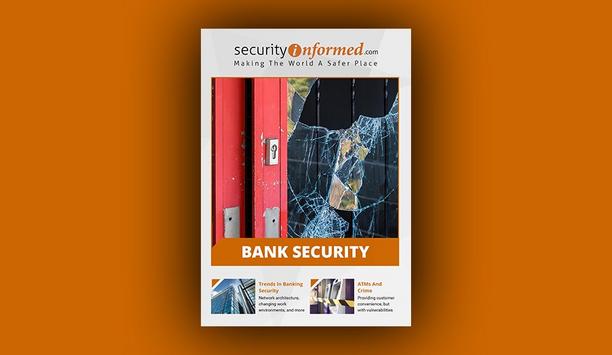
Bank Security
Download

